from ESPN http://ift.tt/1dPqUAn
A First Glimpse of the Great American Eclipse

Making landfall in Oregon, the Moon's dark umbral shadow toured the United States on August 21. Those gathered along its coast to coast path were witness to a total eclipse of the Sun, possibly the most widely shared celestial event in history. But first, the Moon's shadow touched the northern Pacific and raced eastward toward land. This dramatic snapshot was taken while crossing the shadow path 250 miles off the Oregon coast, 45,000 feet above the cloudy northern Pacific. Though from a shorter totality, it captures the eclipse before it could be seen from the US mainland. With the eclipsed Sun not far above, beautiful colors appear along the western horizon giving way to a clear, pitch-black, stratospheric sky in the shadow of the Moon. via NASA http://ift.tt/2wUvjFu
NASA Concludes Summer of Testing with Fifth Flight Controller Hot Fire

NASA engineers closed a summer of successful hot fire testing Aug. 30 for flight controllers on RS-25 engines that will help power the new Space Launch System (SLS) rocket being built to carry astronauts to deep-space destinations, including Mars. via NASA http://ift.tt/2xyYAm6
Lunar View, Solar Eclipse

Orbiting above the lunar nearside on August 21, the Lunar Reconnaissance Orbiter turned to look back on a bright, Full Earth. As anticipated its Narrow Angle Camera scanned this sharp view of our fair planet, catching the shadow of the Moon racing along a path across the United States at about 1,500 miles per hour. In fact, the dark lunar shadow is centered over Hopkinsville, Kentucky at 1:25:30 Central Daylight Time. From there, the New Moon blocked the Sun high in clear skies for about 2 minutes and 40 seconds in a total solar eclipse. via NASA http://ift.tt/2wHTJRS
NASA's IceBridge Surveys Glaciers in Northeast Greenland

NASA's Operation IceBridge is flying its summer Arctic land ice campaign in Greenland, continuing its measurements of the Greenland Ice Sheet and its outlet glaciers. This photograph from the mission was taken on Aug. 29, 2017, from 28,000 feet, looking north while surveying Nioghalvfjerdsbrae (79 N) Glacier in northeast Greenland. via NASA http://ift.tt/2x5KGKi
Panoramic Eclipse Composite with Star Trails

What was happening in the sky during last week's total solar eclipse? This featured little-planet, all-sky, double time-lapse, digitally-fused composite captured celestial action during both night and day from a single location. In this 360x180 panorama, north and south are at the image bottom and top, while east and west are at the left and right edges, respectively. During four hours the night before the eclipse, star trails were captured circling the north celestial pole (bottom) as the Earth spun. During the day of the total eclipse, the Sun was captured every fifteen minutes from sunrise to sunset (top), sometimes in partial eclipse. All of these images were then digitally merged onto a single image taken exactly during the total solar eclipse. Then, the Sun's bright corona could be seen flaring around the dark new Moon (upper left), while Venus simultaneously became easily visible (top). The tree in the middle, below the camera, is a Douglas fir. The images were taken with care and planning at Magone Lake in Oregon, USA. via NASA http://ift.tt/2gmKrnN
Aug. 29, 1965 - Gemini V Crew Returns to Earth

Gemini V command pilot Gordon Cooper (right) and Charles "Pete" Conrad, pilot, walk across the deck of the aircraft carrier USS Lake Champlain following their spacecraft's recovery from the ocean on Aug. 29, 1965. The eight-day Gemini V endurance mission doubled America's spaceflight record set two months earlier. via NASA http://ift.tt/2x1awPF
▶ Jeff Samardzija strikes out 5 in 3-hit shutout against Padres (ESPN)
from ESPN http://ift.tt/1dPqUAn
Final: Giants 3 Padres 0. WP: SF J Samardzija (9-12) LP: SD J Chacin (11-10) (ESPN)
from ESPN http://ift.tt/1dPqUAn
Supersonic Flight Campaign Continues at Kennedy Space Center

A NASA F-18 jet takes off from the agency's Shuttle Landing Facility at NASA's Kennedy Space Center in Florida on Aug. 23, 2017. The F-18 jets fly at supersonic speeds while agency researchers measure the effects of low-altitude turbulence caused by sonic booms, part of NASA's Sonic Booms in Atmospheric Turbulence, or SonicBAT II Program. via NASA http://ift.tt/2xGKj62
A Fleeting Double Eclipse of the Sun
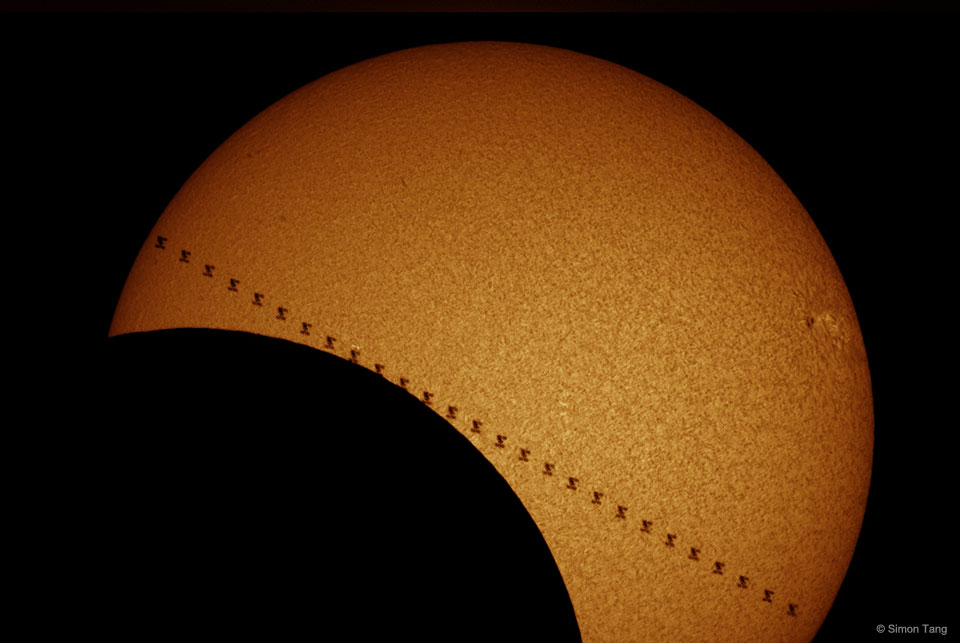
Last week, for a fraction of a second, the Sun was eclipsed twice. One week ago today, many people in North America were treated to a standard, single, partial solar eclipse. Fewer people, all congregated along a narrow path, experienced the eerie daytime darkness of a total solar eclipse. A dedicated few with fast enough camera equipment, however, were able to capture a double eclipse -- a simultaneous partial eclipse of the Sun by both the Moon and the International Space Station (ISS). The Earth-orbiting ISS crossed the Sun in less than a second, but to keep the ISS from appearing blurry, exposure times must be less than 1/1000th of a second. The featured image composite captured the ISS multiple times in succession as it zipped across the face of the Sun. The picture was taken in a specific color emitted by hydrogen which highlights the Sun's chromosphere, a layer hotter and higher up than the usually photographed photosphere. via NASA http://ift.tt/2wShbvy
Final: Diamondbacks 11 Giants 0. WP: ARI P Corbin (12-11) LP: SF C Stratton (2-3) (ESPN)
from ESPN http://ift.tt/1dPqUAn
The Heart Nebula in Hydrogen, Oxygen, and Sulfur

What powers the Heart Nebula? The large emission nebula dubbed IC 1805 looks, in whole, like a heart. The nebula's glow -- as well as the shape of the gas and dust clouds -- is powered by by stellar winds and radiation from massive hot stars in the nebula's newborn star cluster Melotte 15. This deep telescopic image maps the pervasive light of narrow emission lines from atoms of hydrogen, oxygen, and sulfur in the nebula. The field of view spans just over two degrees on the sky, so that it appears larger than four times the diameter of a full moon. The cosmic heart is found in the constellation of Cassiopeia, the boastful mythical Queen of Aethiopia . via NASA http://ift.tt/2vg24fJ
Final: Diamondbacks 4 Giants 3. WP: ARI Z Greinke (15-6) LP: SF T Blach (8-10) (ESPN)
from ESPN http://ift.tt/1dPqUAn
Hurricane Harvey, Seen From the Cupola of the International Space Station

On August 25, 2017, NASA astronaut Jack Fischer photographed Hurricane Harvey from the cupola module aboard the International Space Station as it intensified on its way toward the Texas coast. The Expedition 52 crew on the station has been tracking this storm for the past two days and capturing Earth observation photographs and videos. via NASA http://ift.tt/2wOiueR
Diamond Ring in a Cloudy Sky

As the Moon's shadow swept across the US on August 21, eclipse chasers in the narrow path of totality were treated to a diamond ring in the sky. At the beginning and end of totality, the fleeting and beautiful effect often produces audible gasps from an amazed audience. It occurs just before or after the appearance of the faint solar corona with a brief ring of light and glimpse of Sun. In this scene from the end of totality at Central, South Carolina, clouds drift near the Sun's diamond ring in the sky. via NASA http://ift.tt/2iukDqO
A World of Snowy Dunes on Mars

It was spring in the Northern hemisphere when this image was taken on May 21, 2017, by the HiRISE camera on NASA's Mars Reconnaissance Orbiter. Over the winter, snow and ice have inexorably covered the dunes. Unlike on Earth, this snow and ice is carbon dioxide, better known to us as dry ice. via NASA http://ift.tt/2wBqmRy
The Eagle and The Swan
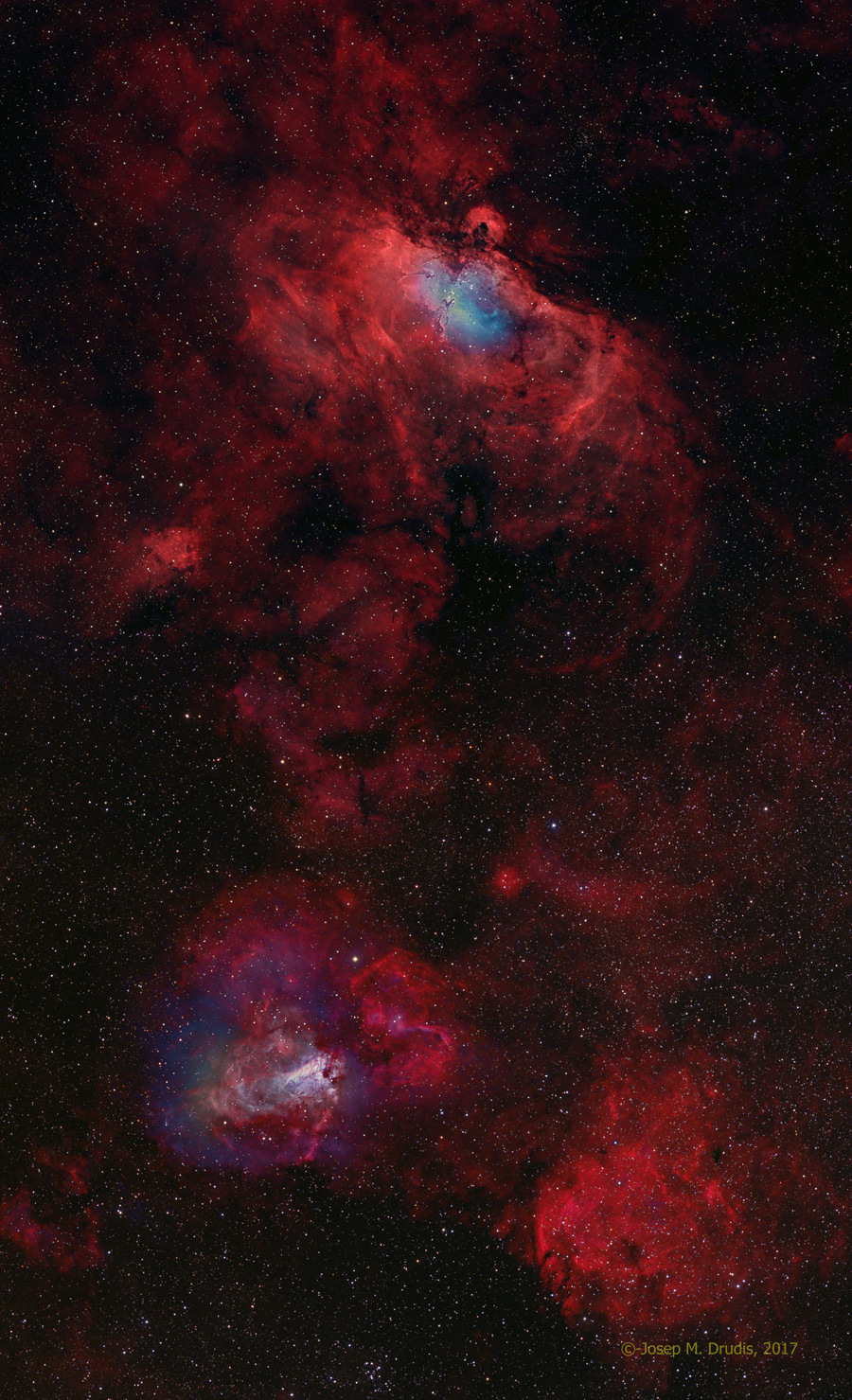
The Eagle Nebula and the Swan Nebula span this broad starscape, a telescopic view toward the Sagittarius spiral arm and the center of our Milky Way galaxy. The Eagle, also known as M16, is at top and M17, the Swan, at bottom of the frame showing the cosmic clouds as brighter regions of active star-formation. They lie along the spiral arm suffused with reddish emission charactistic of atomic hydrogen gas, and dusty dark nebulae. M17, also called the Omega Nebula, is about 5500 light-years away, while M16 is some 6500 light-years distant. The center of both nebulae are locations of well-known close-up images of star formation from the Hubble Space Telescope. In this mosaic image that extends about 3 degrees across the sky, narrowband, high-resultion image data has been used to enhance the central regions of the Eagle and Swan. The extended wings of the Eagle Nebula spread almost 120 light-years. The Swan is over 30 light-years across. via NASA http://ift.tt/2wnvqbS
The Eclipse 2017 Umbra Viewed from Space

As millions of people across the United States experienced a total eclipse as the umbra, or moon’s shadow passed over them, only six people witnessed the umbra from space. The space station crossed the path of the eclipse three times as it orbited above the continental United States at an altitude of 250 miles. via NASA http://ift.tt/2v5PxeW
The Crown of the Sun

During a total solar eclipse, the Sun's extensive outer atmosphere, or corona, is an inspirational sight. Streamers and shimmering features visible to the eye span a brightness range of over 10,000 to 1, making them notoriously difficult to capture in a single photograph. But this composite of telescopic images covers a wide range of exposure times to reveal the crown of the Sun in all its glory. The aligned and stacked digital frames were taken in clear skies above Stanley, Idaho in the Sawtooth Mountains during the Sun's total eclipse on August 21. A pinkish solar prominence extends just beyond the right edge of the solar disk. Even small details on the dark night side of the New Moon can be made out, illuminated by sunlight reflected from a Full Earth. via NASA http://ift.tt/2vluL61
Giants: Hunter Pence (hamstring) scratched from Tuesday's game vs. Brewers (ESPN)
from ESPN http://ift.tt/1dPqUAn
Saturn-lit Tethys

Cassini gazes across the icy rings of Saturn toward the icy moon Tethys, whose night side is illuminated by Saturnshine, or sunlight reflected by the planet. via NASA http://ift.tt/2w11uQk
A Total Solar Eclipse over Wyoming

Will the sky be clear enough to see the eclipse? This question was on the minds of many people attempting to view yesterday's solar eclipse. The path of total darkness crossed the mainland of the USA from coast to coast, from Oregon to South Carolina -- but a partial eclipse occurred above all of North America. Unfortunately, many locations saw predominantly clouds. One location that did not was a bank of Green River Lake, Wyoming. There, clouds blocked the Sun intermittantly up to one minute before totality. Parting clouds then moved far enough away to allow the center image of the featured composite sequence to be taken. This image shows the corona of the Sun extending out past the central dark Moon that blocks our familiar Sun. The surrounding images show the partial phases of the solar eclipse both before and after totality. via NASA http://ift.tt/2wwYk9l
Glory of the Heavens

This composite image shows the progression of a partial solar eclipse over Ross Lake, in Northern Cascades National Park, Washington on Monday, Aug. 21, 2017. via NASA http://ift.tt/2v8Z9Bi
Milky Way over Chilean Volcanoes
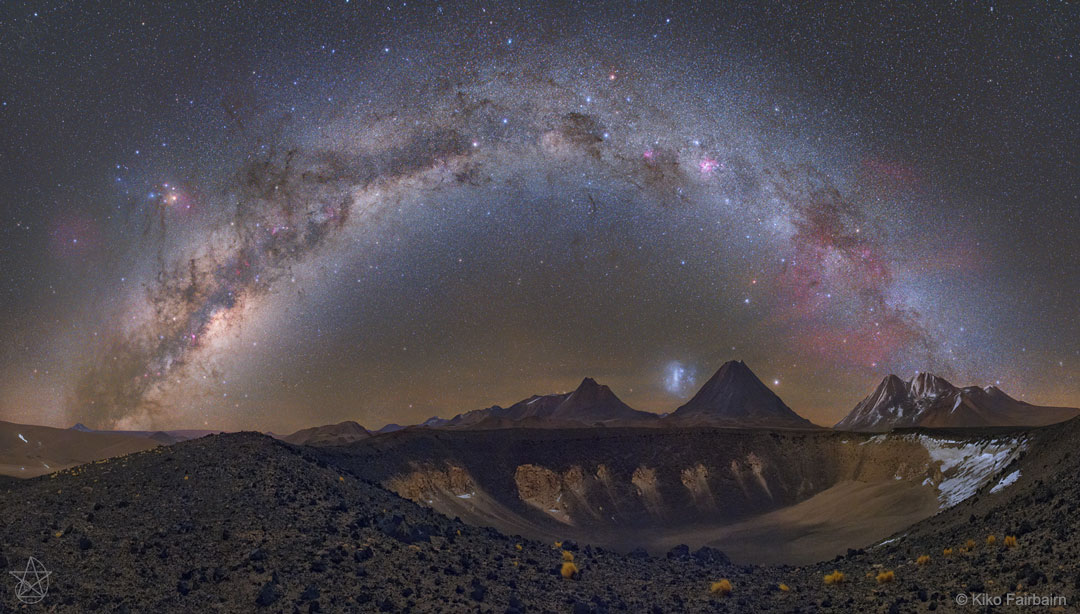
Sometimes, the sky mimics the ground. Taken in 2017 May from the Atacama Desert in Chile, the foreground of the featured image encompasses the dipping edge of the caldera of an extinct volcano. Poetically echoing the dip below is the arch of our Milky Way Galaxy above. Many famous icons dot this southern nighttime vista, including the center of our Milky Way Galaxy on the far left, the bright orange star Antares also on the left, the constellation of the Southern Cross near the top of the arch, and the red-glowing Gum Nebula on the far right. Just above the horizon and splitting two distant volcanic peaks near the image center is the Large Magellanic Cloud -- the largest satellite galaxy of the Milky Way. via NASA http://ift.tt/2vPgYrT
Giants eliminated from winning NL West title after Sunday's 5-2 loss to Phillies (ESPN)
from ESPN http://ift.tt/1dPqUAn
▶ Denard Span gets game off to thrilling start with leadoff inside-the-park HR (ESPN)
from ESPN http://ift.tt/1dPqUAn
Final: Giants 10 Phillies 2. WP: SF M Moore (4-12) LP: PHI Z Eflin (1-5) (ESPN)
from ESPN http://ift.tt/1dPqUAn
Total Solar Eclipse of 1979
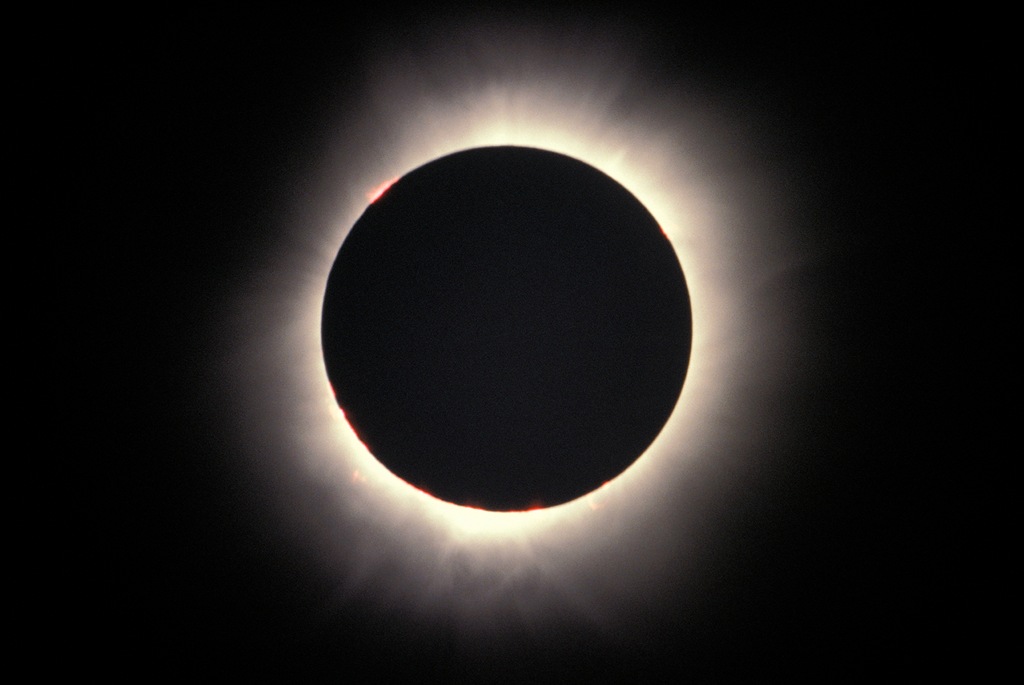
From cold, clear skies over Riverton, Manitoba, Canada, planet Earth, the solar corona surrounds the silhouette of the New Moon in this telescopic snapshot of the total solar eclipse of February 26, 1979. Thirty eight years ago, it was the last total solar eclipse visible from the contiguous United States. The narrow path of totality ran through the northwestern states of Washington, Oregon, Idaho, Montana, and North Dakota before crossing into Canadian provinces Saskatchewan, Manitoba, Ontario and Quebec. Following the upcoming August 21, 2017 total solar eclipse crossing the U.S. from coast to coast, an annular solar eclipse will be seen in the continental United States on October 14, 2023, visible along a route from Northern California to Florida. Then, the next total solar eclipse to touch the continental U.S. will track across 13 states from from Texas to Maine on April 8, 2024. via NASA http://ift.tt/2v7zND7
Atlas V Rocket and TDRS-M

As the Sun rises at Space Launch Complex 41 at Cape Canaveral Air Force Station in Florida, a United Launch Alliance Atlas V rocket vents liquid oxygen propellant vapors during fueling for the lift off of NASA's Tracking and Data Relay Satellite, TDRS-M. via NASA http://ift.tt/2uPitaN
Final: Giants 5 Phillies 4. WP: SF J Samardzija (8-12) LP: PHI A Nola (9-8) (ESPN)
from ESPN http://ift.tt/1dPqUAn
Perseids over the Pyrenees

This mountain and night skyscape stretches across the French Pyrenees National Park on August 12, near the peak of the annual Perseid meteor shower. The multi-exposure panoramic view was composed from the Col d'Aubisque, a mountain pass, about an hour before the bright gibbous moon rose. Centered is a misty valley and lights from the region's Gourette ski station toward the south. Taken over the following hour, frames capturing some of the night's long bright perseid meteors were aligned against the backdrop of stars and Milky Way. via NASA http://ift.tt/2w3QST6
Jupiter: A New Point of View

This striking Jovian vista was created by citizen scientists Gerald Eichstädt and Seán Doran using data from the JunoCam imager on NASA’s Juno spacecraft. via NASA http://ift.tt/2vLOn5u
NGC 2442: Galaxy in Volans

Distorted galaxy NGC 2442 can be found in the southern constellation of the flying fish, (Piscis) Volans. Located about 50 million light-years away, the galaxy's two spiral arms extending from a pronounced central bar have a hook-like appearance in wide-field images. But this mosaicked close-up, constructed from Hubble Space Telescope and European Southern Observatory data, follows the galaxy's structure in amazing detail. Obscuring dust lanes, young blue star clusters and reddish star forming regions surround a core of yellowish light from an older population of stars. The sharp image data also reveal more distant background galaxies seen right through NGC 2442's star clusters and nebulae. The image spans about 75,000 light-years at the estimated distance of NGC 2442. via NASA http://ift.tt/2i4R92x
Final: Marlins 8 Giants 1. WP: MIA J Urena (11-5) LP: SF M Cain (3-10) (ESPN)
from ESPN http://ift.tt/1dPqUAn
Space Station Flight Over the Bahamas

One of the most recognizable points on the Earth for astronauts to photograph is the Bahamas. Randy Bresnik of NASA shared this Aug. 13 photo from the International Space Station, saying, "The stunning Bahamas were a real treat for us. The vivid turquoise of the water over the reef was absolutely captivating." via NASA http://ift.tt/2x4Sg4W
Final: Giants 9 Marlins 4. WP: SF M Bumgarner (3-5) LP: MIA J Tazawa (2-3) (ESPN)
from ESPN http://ift.tt/1dPqUAn
Spiraling Cloud Patterns Over Guadalupe Island

On May 24, 2017, the Visible Infrared Imaging Radiometer Suite (VIIRS) on the Suomi NPP satellite captured a natural-color image of long, spiraling cloud patterns, or "von Kármán vortices," on the lee side of Guadalupe Island. The volcanic island rises from the Pacific Ocean off the coast of Baja California, Mexico. via NASA http://ift.tt/2wbhbGA
Final: Marlins 8 Giants 3. WP: MIA A Conley (5-5) LP: SF T Blach (8-8) (ESPN)
from ESPN http://ift.tt/1dPqUAn
SpaceX CRS-12 Cargo Mission Launch

The two-stage Falcon 9 launch vehicle lifts off Launch Complex 39A at NASA's Kenney Space Center carrying the Dragon resupply spacecraft to the International Space Station. via NASA http://ift.tt/2uDQFGd
Highlighting Titan's Hazes

NASA's Cassini spacecraft looks toward the night side of Saturn's moon Titan in a view that highlights the extended, hazy nature of the moon's atmosphere. via NASA http://ift.tt/2w6cbDc
▶ Pablo Sandoval takes Max Scherzer deep for his first HR since re-joining Giants (ESPN)
from ESPN http://ift.tt/1dPqUAn
F/11: Nationals 6 Giants 2. WP: WSH M Albers (6-2) LP: SF A Suarez (0-2) (ESPN)
from ESPN http://ift.tt/1dPqUAn
Giants: Buster Posey not in lineup for Game 1 of Sunday's doubleheader vs. Nationals (ESPN)
from ESPN http://ift.tt/1dPqUAn
Final: Nationals 3 Giants 1. WP: WSH E Jackson (3-2) LP: SF J Samardzija (7-12) (ESPN)
from ESPN http://ift.tt/1dPqUAn
Detailed View of a Solar Eclipse Corona

Only in the fleeting darkness of a total solar eclipse is the light of the solar corona easily visible. Normally overwhelmed by the bright solar disk, the expansive corona, the sun's outer atmosphere, is an alluring sight. But the subtle details and extreme ranges in the corona's brightness, although discernible to the eye, are notoriously difficult to photograph. Pictured here, however, using multiple images and digital processing, is a detailed image of the Sun's corona taken during the 2008 August total solar eclipse from Mongolia. Clearly visible are intricate layers and glowing caustics of an ever changing mixture of hot gas and magnetic fields. Bright looping prominences appear pink just above the Sun's limb. A similar solar corona might be visible through clear skies in a thin swath across the USA during a total solar eclipse that occurs just one week from tomorrow. via NASA http://ift.tt/2uPVDuV
Hubble Displays a Dwarf Spiral Galaxy

Dwarf galaxy NGC 5949 sits at a distance of around 44 million light-years from us, placing it within the Milky Way’s cosmic neighborhood. via NASA http://ift.tt/2vVzjFb
A Total Solar Eclipse of Saros 145

A darkened sky holds bright planet Venus, the New Moon in silhouette, and the shimmering corona of the Sun in this image of a total solar eclipse. A composite of simultaneous telephoto and wide angle frames it was taken in the path of totality 18 years ago, August 11, 1999, near Kastamonu, Turkey. That particular solar eclipse is a member of Saros 145. Known historically from observations of the Moon's orbit, the Saros cycle predicts when the Sun, Earth, and Moon will return to the same geometry for a solar (or lunar) eclipse. The Saros has a period of 18 years, 11 and 1/3 days. Eclipses separated by one Saros period belong to the same numbered Saros series and are very similar. But the path of totality for consecutive solar eclipses in the same Saros shifts across the Earth because the planet rotates for an additional 8 hours during the cycle's fractional day. So the next solar eclipse of Saros 145 will also be a total eclipse, and the narrow path of totality will track coast to coast across the United States on August 21, 2017. via NASA http://ift.tt/2vIhybS
A Starburst with the Prospect of Gravitational Waves

More than a hundred years after Swift’s discovery of the "starburst" galaxy IC 10, astronomers are studying IC 10 with the most powerful telescopes of the 21st century. via NASA http://ift.tt/2wxOwt0
Night of the Perseids
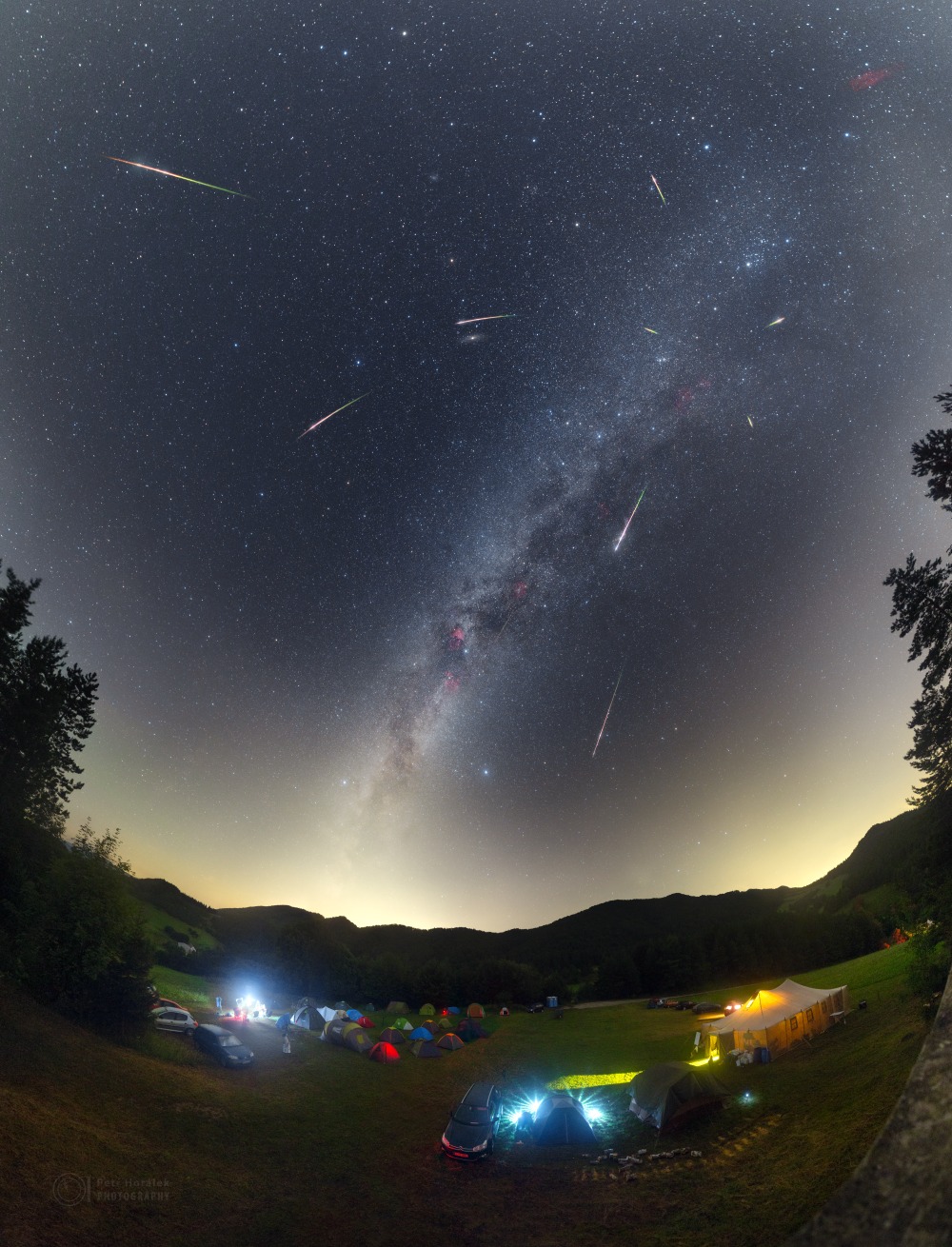
This weekend, meteors will rain down near the peak of the annual Perseid Meteor Shower. Normally bright and colorful, the Perseid shower meteors are produced by dust swept up by planet Earth from the orbit of Comet Swift-Tuttle. They streak from a radiant in Perseus, above the horizon in clear predawn skies. Despite interfering light from August's waning gibbous moon, this year's Perseids will still be enjoyable, especially if you can find yourself in an open space, away from city lights, and in good company. Frames used in this composite view capture bright Perseid meteors from the 2016 meteor shower set against a starry background along the Milky Way, with even the faint Andromeda Galaxy just above center. In the foreground, astronomers of all ages have gathered on a hill above the Slovakian village of Vrchtepla. via NASA http://ift.tt/2uo0I28
Final: Giants 3 Cubs 1. WP: SF M Bumgarner (2-5) LP: CHC B Duensing (0-1) (ESPN)
from ESPN http://ift.tt/1dPqUAn
📷 Giants release nickname jerseys for #PlayersWeekend Aug. 25-27 (ESPN)
from ESPN http://ift.tt/1dPqUAn
Solar Evaporation Ponds Near Moab, Utah

An astronaut aboard the International Space Station took this photograph of solar evaporation ponds outside the city of Moab, Utah. There are 23 colorful ponds spread across 400 acres. They are part of a large operation to mine potassium chloride—more commonly referred to as muriate of potash (MOP)—from ore buried underground. via NASA http://ift.tt/2uGPbGk
▶ Buster Posey smacks 3-run homer that just clears wall in 6-3 win over Cubs (ESPN)
from ESPN http://ift.tt/1dPqUAn
August Lunar Eclipse

August's Full Moon is framed in this sharp, high dynamic range composition. Captured before sunrise on August 8 from Sydney, Australia, south is up and the Earth's dark, umbral shadow is at the left, near the maximum phase of a partial lunar eclipse. Kicking off the eclipse season, this time the Full Moon's grazing slide through Earth's shadow was visible from the eastern hemisphere. Up next is the much anticipated total solar eclipse of August 21. Then, the New Moon's shadow track will include North America, the narrow path of totality running coast to coast through the United States. via NASA http://ift.tt/2woQfAK
Moon Rise From the Space Station

From his vantage point aboard the International Space Station, NASA astronaut Randy Bresnik pointed his camera toward the rising Moon and captured this beautiful image on August 3, 2017. Bresnik wrote, "Gorgeous moon rise! Such great detail when seen from space. Next full moon marks #Eclipse2017. We’ll be watching from @Space_Station." via NASA http://ift.tt/2wELWk9
Density Waves in Saturns Rings from Cassini
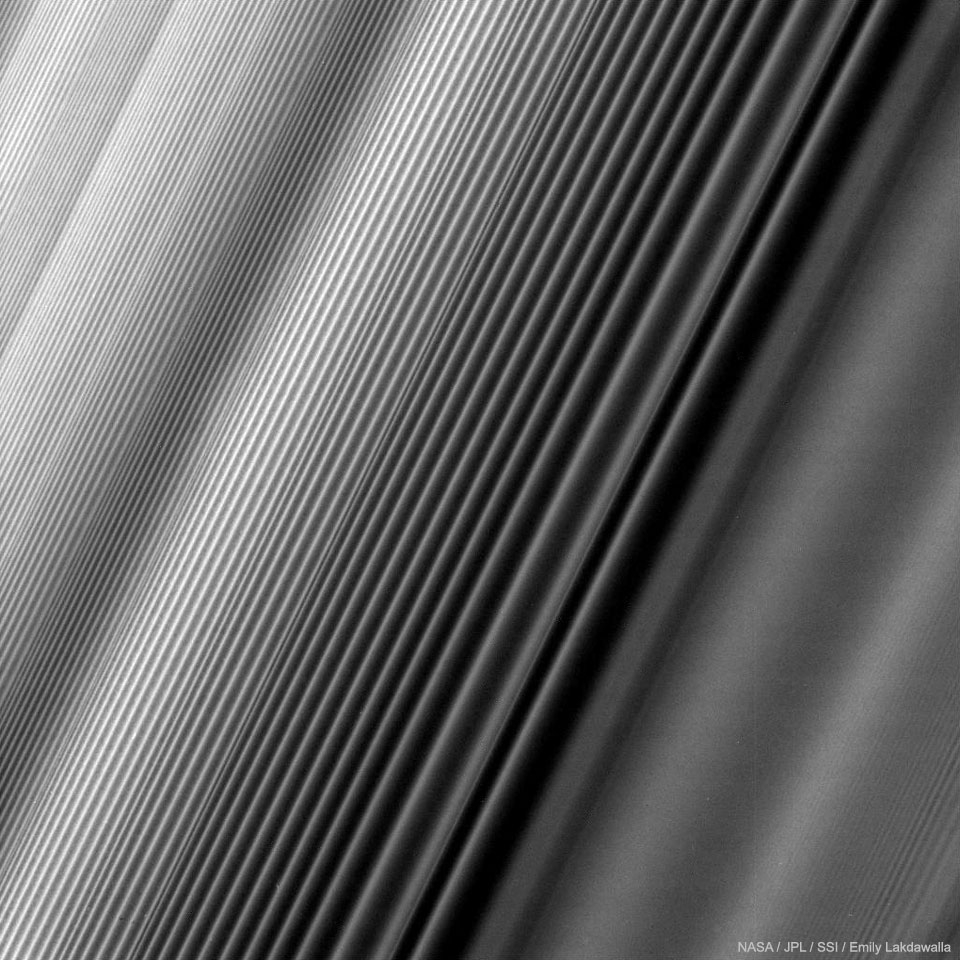
What causes the patterns in Saturn's rings? The Cassini spacecraft, soon ending its 13 years orbiting Saturn, has sent back another spectacular image of Saturn's immense ring system in unprecedented detail. The physical cause for some of Saturn's ring structures is not always understood. The cause for the beautifully geometric type of ring structure shown here in ring of Saturn, however, is surely a density wave. A small moon systematically perturbing the orbits of ring particles circling Saturn at slightly different distances causes such a density wave bunching. Also visible on the lower right of the image is a bending wave, a vertical wave in ring particles also caused by the gravity of a nearby moon. Cassini's final orbits are allowing a series of novel scientific measurements and images of the Solar System's most grand ring system. via NASA http://ift.tt/2vaJh3H
Prometheus and the Ghostly F Ring

The thin sliver of Saturn's moon Prometheus lurks near ghostly structures in Saturn's narrow F ring in this view from NASA's Cassini spacecraft. via NASA http://ift.tt/2wAP7cL
Spiral Galaxy NGC 1512: The Inner Ring

Most galaxies don't have any rings -- why does this galaxy have two? To begin, the bright band near NGC 1512's center is a nuclear ring, a ring that surrounds the galaxy center and glows brightly with recently formed stars. Most stars and accompanying gas and dust, however, orbit the galactic center in a ring much further out -- here seen near the image edge. This ring is called, counter-intuitively, the inner ring. If you look closely, you will see this the inner ring connects ends of a diffuse central bar that runs horizontally across the galaxy. These ring structures are thought to be caused by NGC 1512's own asymmetries in a drawn-out process called secular evolution. The gravity of these galaxy asymmetries, including the bar of stars, cause gas and dust to fall from the inner ring to the nuclear ring, enhancing this ring's rate of star formation. Some spiral galaxies also have a third ring -- an outer ring that circles the galaxy even further out. via NASA http://ift.tt/2vDVT5c
Final: Giants 6 Diamondbacks 3. WP: SF J Samardzija (7-11) LP: ARI P Corbin (8-11) (ESPN)
from ESPN http://ift.tt/1dPqUAn
F/10: Giants 5 Diamondbacks 4. WP: SF H Strickland (2-2) LP: ARI T McFarland (4-4) (ESPN)
from ESPN http://ift.tt/1dPqUAn
Pirates claim P George Kontos off waivers from Giants; 3.83 ERA in 50 appearances (ESPN)
from ESPN http://ift.tt/1dPqUAn
Giants call up Pablo Sandoval; place Brandon Belt on 7-day concussion DL (ESPN)
from ESPN http://ift.tt/1dPqUAn
Gravity s Grin
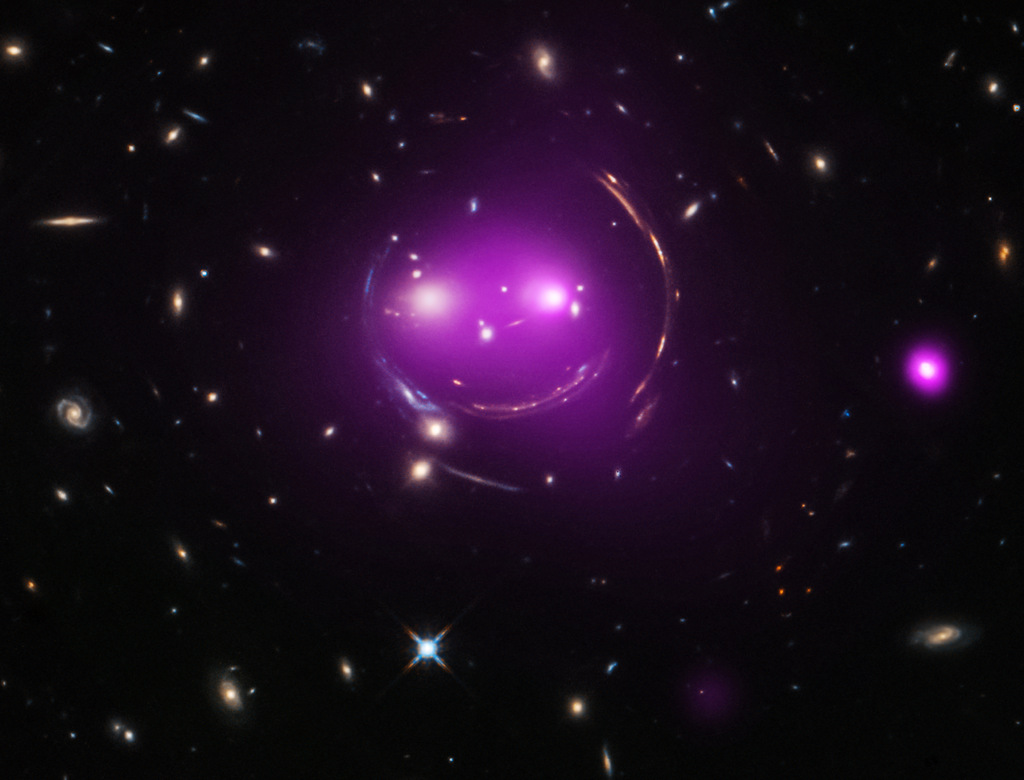
Albert Einstein's general theory of relativity, published over 100 years ago, predicted the phenomenon of gravitational lensing. And that's what gives these distant galaxies such a whimsical appearance, seen through the looking glass of X-ray and optical image data from the Chandra and Hubble space telescopes. Nicknamed the Cheshire Cat galaxy group, the group's two large elliptical galaxies are suggestively framed by arcs. The arcs are optical images of distant background galaxies lensed by the foreground group's total distribution of gravitational mass. Of course, that gravitational mass is dominated by dark matter. The two large elliptical "eye" galaxies represent the brightest members of their own galaxy groups which are merging. Their relative collisional speed of nearly 1,350 kilometers/second heats gas to millions of degrees producing the X-ray glow shown in purple hues. Curiouser about galaxy group mergers? The Cheshire Cat group grins in the constellation Ursa Major, some 4.6 billion light-years away. via NASA http://ift.tt/2fdbVf2
Giants: Brandon Belt struck in head with pitch, leaves vs. Diamondbacks in 6th inning (ESPN)
from ESPN http://ift.tt/1dPqUAn
NASA's Solar Dynamics Observatory Watches a Sunspot

On July 5, 2017, NASA’s Solar Dynamics Observatory watched an active region — an area of intense and complex magnetic fields — rotate into view on the Sun. This image shows a blended view of the sunspot in visible and extreme ultraviolet light, revealing bright coils arcing over the active region — particles spiraling along magnetic field lines. via NASA http://ift.tt/2v43I2x
North North Temperate Zone Little Red Spot

On July 11, the Juno spacecraft once again swung near the turbulent Jovian cloud tops. On its seventh orbital closest approach this perijove passage brought Juno within 3,500 kilometers of the Solar System's largest planetary atmosphere. Near perijove the rotating JunoCam was able to record this stunning, clear view of one of Jupiter's signature vortices. About 8,000 kilometers in diameter, the anticyclonic storm system was spotted in Jupiter's North North Temperate Zone in the 1990s. That makes it about half the size of an older and better known Jovian anticyclone, the Great Red Spot, but only a little smaller than planet Earth. At times taking on reddish hues, the enormous storm system is fondly known as a North North Temperate Zone Little Red Spot. via NASA http://ift.tt/2vkZKU4
Final: Giants 11 Athletics 2. WP: SF T Blach (7-7) LP: OAK K Graveman (2-3) (ESPN)
from ESPN http://ift.tt/1dPqUAn
A Look Inside the Space Station's Experimental BEAM Module

NASA astronaut Randy Bresnik looks through the hatch of the International Space Station's Bigelow Expandable Aerospace Module (BEAM) on July 31, 2017. The BEAM is an experimental expandable module just over halfway into its planned two-year demonstration on the space station. via NASA http://ift.tt/2hrHlPL
Final: Athletics 6 Giants 1. WP: OAK D Gossett (3-6) LP: SF M Moore (3-11) (ESPN)
from ESPN http://ift.tt/1dPqUAn
Pelican Nebula Close Up
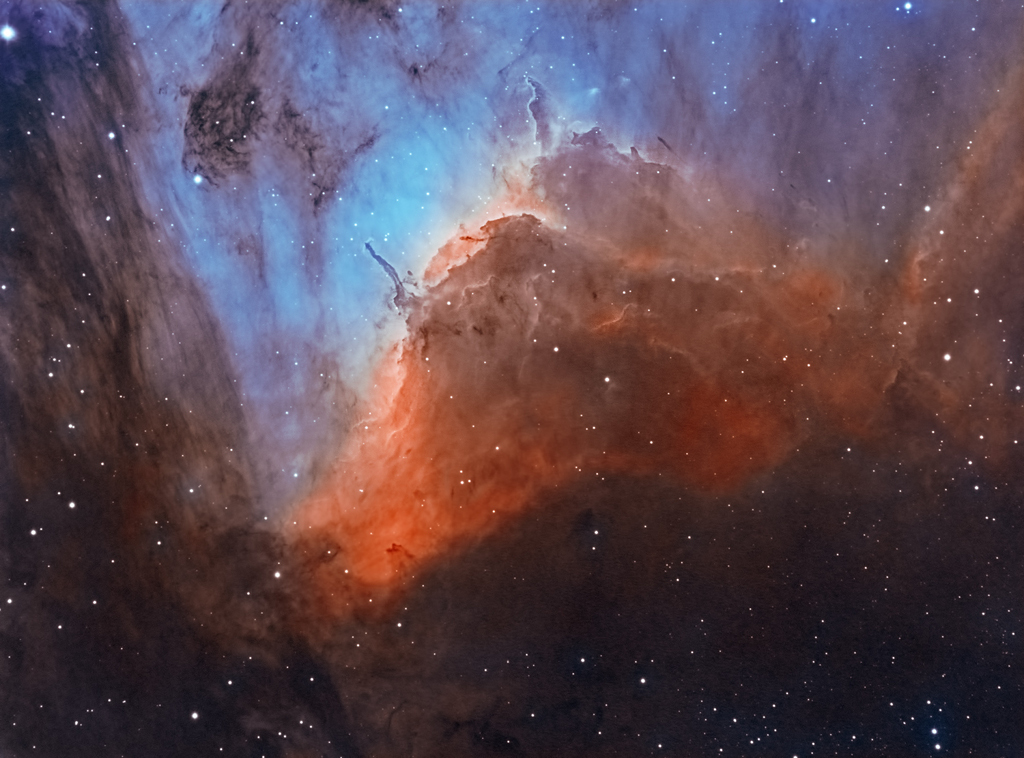
The prominent ridge of emission featured in this vivid skyscape is designated IC 5067. Part of a larger emission region with a distinctive shape, popularly called The Pelican Nebula, the ridge spans about 10 light-years and follows the curve of the cosmic pelican's head and neck. Fantastic, dark shapes inhabiting the view are clouds of cool gas and dust sculpted by energetic radiation from young, hot, massive stars. But stars are also forming within the dark shapes. Twin jets emerging from the tip of the long, dark tendril left of center are the telltale signs of an embedded protostar cataloged as Herbig-Haro 555 (HH 555). In fact, other Herbig-Haro objects indicating the presence of protostars are found within the frame. The Pelican Nebula itself, also known as IC 5070, is about 2,000 light-years away. To find it, look northeast of bright star Deneb in the high flying constellation Cygnus. via NASA http://ift.tt/2f7Hbfv
Space Station Flyover of Super Typhoon Noru

NASA astronaut Randy Bresnik photographed Super Typhoon Noru on August 1, 2017, as the International Space Station passed overhead. He shared images of the massive storm on social media, writing, "Super Typhoon #Noru, amazing the size of this weather phenomenon, you can almost sense its power from 250 miles above." via NASA http://ift.tt/2tZW5Hq
▶ Hunter Pence cranks opposite-field 3-run shot to increase lead over A's in 10-4 win (ESPN)
from ESPN http://ift.tt/1dPqUAn
Final: Giants 10 Athletics 4. WP: SF J Samardzija (6-11) LP: OAK S Manaea (8-6) (ESPN)
from ESPN http://ift.tt/1dPqUAn
Giants: Johnny Cueto diagnosed with minor elbow strain; no timetable for return (ESPN)
from ESPN http://ift.tt/1dPqUAn
August 1, 1971 - Second Apollo 15 Moonwalk

This mini-panorama combines two photographs taken by Apollo 15 lunar module pilot Jim Irwin, from the Apollo Lunar Surface Experiments Package (ALSEP) site, at the end of the second Apollo 15 moonwalk on August 1, 1971. Apollo 15 was the fourth crewed mission to land on the Moon. via NASA http://ift.tt/2ugfLpO
Subscribe to:
Comments (Atom)